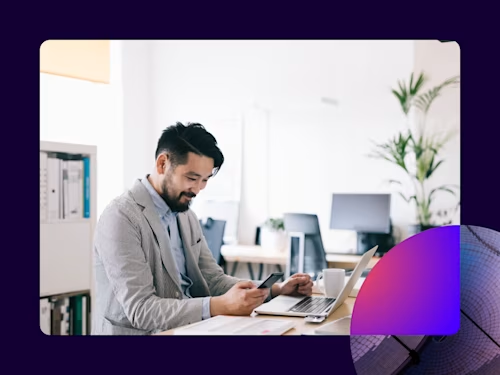
HM Land Registry is evaluating Qualified Electronic Signature (QES) - what is it and what are the benefits?
HMLR recently started a QES pilot. Here we take a closer look at Qualified Electronic Signatures (QES) and its associated benefits.

In 2020, HM Land Registry (HMLR) began accepting electronic signing including third party electronic witnessing, referred by the HMLR as Witnessed Electronic Signatures (WES). Since then, HMLR also has been evaluating using enhanced electronic signatures, specifically called Qualified Electronic Signatures (QES), as a more secure electronic signing solution in digitising the conveyance process.
HMLR recently started a QES pilot, and in September, Hugh James, one of the top 100 UK law firms, completed the UK's first-ever property deal submitted to HMLR with QES using Docusign electronic signature platform to complete the transaction. The introduction of QES has been called a "game changer" for conveyancing.
Here we take a closer look at Qualified Electronic Signatures (QES) and the associated benefits including greater assurance and security, cost efficiencies and positive environmental impact.
What is a Qualified Electronic Signature?
First, it's important to understand that a Qualified Electronic Signature (QES) is an electronic signature that uses a technology called a 'digital certificate' to authenticate the signer's identity. Digital certificates indicate that signers have completed extra steps to confirm their identities. A signer's digital certificate is used to create the digital signature and then attached to the signed document.
A Qualified Electronic Signature or digital signature offers the highest level of trust through a face-to-face identity verification process performed by a Qualified Trust Service Provider (QTSP).
Such a trust service provider must obtain qualified status from a governmental supervisory body that effectively allows the entity to provide qualified trust services for the creation of qualified electronic signatures. The European Union maintains an EU Trust List that sets out those providers that are qualified to offer this service, including Docusign.
The QES process establishes the validity of the signature process, to the extent that a QES is considered the legal equivalent of a wet signature under UK law. There are many QES examples in Europe. In the UK, GOV.UK Verify is a QES-enabled service.
What is the difference between QES and WES (Witnessed Electronic Signature)
With many people working from home and organisations functioning remotely in 2020, HM Land Registry (HMLR) issued requirements that confirmed its acceptance of a transfer deed or other form of dispositionary deed that had been electronically signed–providing greater flexibility and an improved signing experience for many people and organisations in the UK when working with HMLR. This process has been referred to by HMLR as a Witnessed Electronic Signature (WES).
In order for electronic signatures to be accepted by HMLR, several key requirements had to be met including:
(1) a need for physical presence of the witness and
(2) a One Time Password (OTP) access authentication for the signatory AND the witness.
Here, Witnessed Electronic Signatures (WES) replaced the need for a wet-ink signature by mirroring the traditional process, which required the physical presence and electronic signature of a witness.
Qualified Electronic Signatures offer a heightened level of face-to-face identity verification that removes the need in an HMLR transaction for a witness.
"The adoption of digital tools to develop an improved, faster, data-led conveyancing process is integral to the HM Land Registry of the future. Qualified Electronic Signatures is a fundamental component of our ambition to enable fully digital transactions, and we will continue to work with customers and the industry to deliver a secure, reliable service."
- HM Land Registry
What are the benefits of signing with QES?
Security and Trust
Previously, a signatory would sign a document and then return it by posting, scanning or attaching it to an email. The problem with these practices is that they are not always totally secure. QES offers enhanced security and trust in the signing process, ensuring the integrity of the document and the authenticity of the signer.
Legality
In the UK and EU, a QES has the equivalent legal effect as a handwritten signature with a higher evidentiary value in court.
Speed and Efficiency
Using QES to complete property deals can safely accelerate the process. For Hugh James, the transaction which would normally take between 6-8 weeks when done manually, was completed in 24 hours using QES.
Cost
Getting property contracts signed often involves the contract being shipped around the country or even abroad to gather signatures. This can often take weeks or even months and incur large costs. Using QES instead of wet signatures drives cost savings by reducing the direct costs associated with manual agreement processes such as printing and posting/ couriering.
Related posts
 Insights for LeadersUpdated 11 Feb 2025
Insights for LeadersUpdated 11 Feb 2025

8 Contract Management Trends to Watch in 2025
Discover what's new with Docusign IAM or start with eSignature for free


